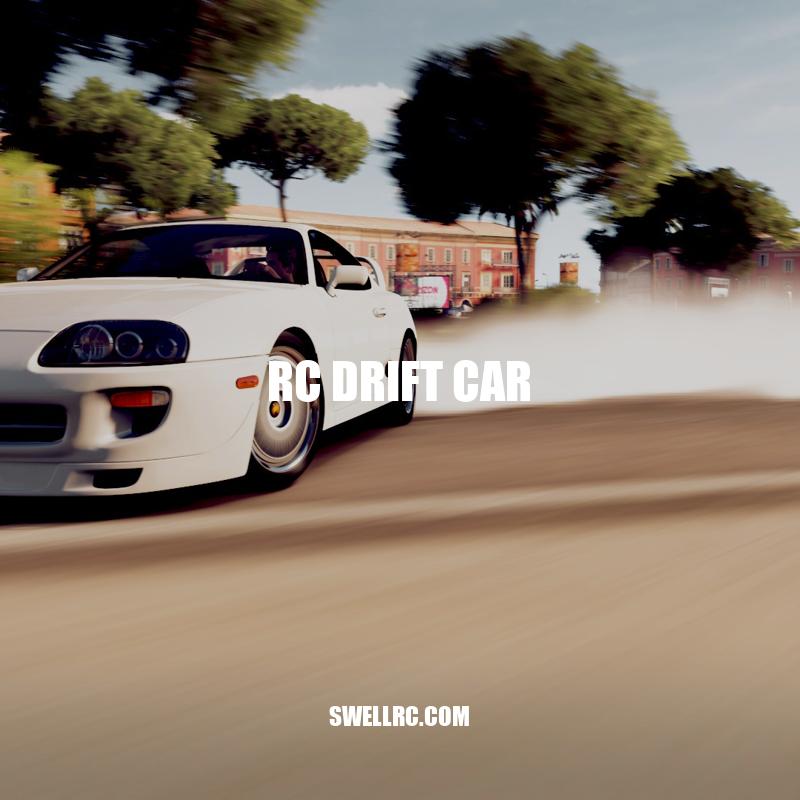RC Drift Cars: The Ultimate Guide
Remote Controlled (RC) Drift Cars have evolved from just a hobbyist’s playthings to a serious competitive sport. These miniature models of drifting vehicles have caught fire in recent years, creating a large community of enthusiasts worldwide. For those unfamiliar with RC drift cars, they are essentially small-scale replicas of real-life drifting cars that can be driven on a flat surface like a wooden or concrete floor. These models feature realistic details like custom body graphics, adjustable suspension, and slick drifting tires to allow them to mimic the effects of drifting. RC drift cars typically come packed with high-end electronic systems and motors that allow for precise and dynamic drifting movements. These miniature drift machines can be controlled by remote, making it easier for users to control direction, speed, and drift angle. Given their competitiveness and unique drifting ability, there has been a surge of people, including hobbyists and professional racers, who are dedicated to building, maintaining, and racing RC drift cars.
Understanding RC Drift Cars
To fully appreciate the world of RC drift cars, it’s essential to understand how they work. Here’s a breakdown of some of the basic elements that go into RC drift cars:
- Chassis: The main structure of the car that everything else attaches to. The chassis affects the overall handling and drift characteristics of the car.
- Drivetrain: The system that transmits power from the motor to the wheels, including the differential and transmission.
- Suspension: Allows each wheel to move independently and absorb bumps on the ground. The suspension’s stiffness affects how the car handles and drifts.
- Electronic Speed Control (ESC): Controls the speed and acceleration of the car’s motor. There are many different types of ESCs available, ranging from basic to high-end.
- Motor: The motor provides the power that turns the wheels. Higher-end motors typically provide more power and allow for faster acceleration.
- Battery: Provides power to the motor and electronics. Higher-end batteries typically have higher capacity and allow for longer run times and faster charging.
- Tires: RC drift cars use specially designed drift tires that allow for controlled sliding and drifting movements. Tires come in various compounds and hardness levels, affecting the car’s overall grip on the ground.
In addition to the basic elements, RC drift cars offer various customization options, with many enthusiasts opting to personalize their cars with custom bodies and graphics. Some popular website options for buying RC drift cars include Horizon Hobby, AMain Hobbies, and Tamiya, where you can find high-quality models suitable for various skill levels.
What makes an RC car a drift car?
An RC car is made for drifting by having features that allow it to slide easily around corners. Ideally, a drifting RC car must have an electric-powered motor, a stiffer suspension, and a lower ground clearance than a regular radio control buggy. Additionally, drifting-specific RC cars and RC chassis provide numerous tuning and modification options. If you’re into RC drifting, check out drifting RC cars and RC chassis at online retailers like Amazon or HobbyKing.
Types of RC Drift Cars
RC drift cars come in various shapes and sizes, with different driving mechanisms and power sources. Here are some of the most popular types of RC drift cars:
| Type | Description |
|---|---|
| 1/8 Scale | Large, powerful cars for experienced racers. These cars are typically gas-powered and require a lot of skill to handle. |
| 1/10 Scale | One of the most popular sizes of RC drift cars, these cars are electric and offer a good balance of speed and control. |
| 1/16 Scale | Smaller, more affordable cars that are great for beginners. These cars are electric and easier to handle than larger models. |
| AWD Drift Cars | All-wheel-drive drift cars are great for beginners as they offer more traction and stability than other kinds of drift cars. |
| RWD Drift Cars | Rear-wheel-drive drift cars are more challenging to control but offer more realistic drifting experience since most real cars are RWD. |
Beyond these types of RC drift cars, there are also different models and driving mechanisms, including belt drive, shaft drive, and gear drive. Most RC drift cars come in ready-to-run (RTR) kits, while others require some assembly before use. RC drift cars are popular among hobbyists, with many enthusiasts customizing their cars with aftermarket parts and accessories. Some of the most popular websites for buying RC drift cars and accessories include RC Planet, Tower Hobbies, and RC Superstore.
Which RC car is best for drifting?
When it comes to drifting, the best RC car is the one with rear-wheel-drive and drift-specific tires with a smooth tread pattern. Some great options include the Redcat Racing EPX Drift Car, Yokomo YD-2SX II, and the MST RMX 2.0 S drift car. It’s important to do thorough research before making a purchase, and websites like Drifted.com offer in-depth reviews and guides to help you make an informed decision.
Tips for Driving RC Drift Cars
Driving an RC drift car can be challenging, especially for beginners. Here are some tips to help you get started:
- Always start slow; it takes time to learn how to control your car.
- Maintain your car’s battery life, and always have a spare just in case.
- Choose the right surface to drift on; hard, smooth surfaces with minimal debris are ideal.
- Use drift tires to maximize your car’s sideways ability.
- Experiment with different chassis setups and tuning to find what works best for you.
- Learn how to properly enter and exit turns by using your car’s brakes and throttle to balance speed and cornering.
- Practice different drifting techniques, including feint, power over, and lift-off.
By following these tips, you’ll be well on your way to becoming a skilled RC drift car driver. If you’re looking for resources and information on RC drifting, you can check out popular forums like RC Drift Japan, DriftMission, and HobbyTalk. You can also find many instructional videos on YouTube, such as from channels like DriftMission, MST Racing, and RC Garage. Additionally, there are many online stores like RCMart, AMain Hobbies, and HobbyKing that sell RC drift car parts, accessories, and upgrades to help you improve your driving performance.
How do you drive a RC Drift car?
To drive an RC drift car, start by braking as usual when approaching a curve, then steer your car toward the apex and quickly accelerate faster than normal so your back tires lose their grip, causing the tail end of your car to slide. Practice making controlled slides until you can effectively drift through turns. Check out websites like Hobbypark.com for RC drift car products and tutorials on how to improve your drifting skills.
RC Drift Car Competitions
RC drift car racing has become a popular competitive sport worldwide. Here are some of the biggest competitions you should know about:
- D1 Grand Prix: Founded in 2000, D1 Grand Prix is an annual championship series that takes place in Japan and attracts drivers from all over the world. It’s considered the biggest RC drift car competition globally and features thrilling head-to-head battles.
- World RC Drift Championship: This international competition takes place in different locations around the world each year, with the best RC drift car drivers from each region competing for the title.
- RWD RC Drift World Cup: This championship series is specifically for rear-wheel drive (RWD) RC drift cars and brings together drivers from various countries to compete in a friendly, yet demanding competition.
Competitions often have specific rules and regulations around car setup, car specs, and judging criteria. Some of the judging criteria might include speed, angle, style, and proximity to other cars. Spectating these competitions can be both exciting and entertaining, especially when the competition is fierce. If you’re interested in attending or participating in RC drift car competitions, you can visit the official websites of each competition to gather more information. Some popular websites to visit include RC Drift Japan, DriftMission, and RCDriftEvents.
What are the different drift competitions?
There are several types of drift competitions, including Formula Drift, Drifting Grand Prix, Drift Matsuri, and Drift Muscle. Formula Drift is the most popular and professional drift competition, where drivers compete in a series of events across North America. Drifting Grand Prix is a global competition series, while Drift Matsuri is more of a festival-style event with multiple competitions and a laid-back atmosphere. Drift Muscle is a Japanese series that features some of the top drivers in the country. Information on each competition can be found on their respective websites.
Conclusion
In conclusion, RC drift cars have become a popular hobby that combines the thrill of racing with the art of drifting. Whether you’re a beginner or an experienced hobbyist, the RC drift car world offers a diverse range of options to suit your preferences and skill levels. From the different scales and driving modes to the competitive scene, there is something for everyone.
If you’re interested in starting this hobby, there are many resources available online to help you get started, including tutorials, forums, and online communities. You can also find various brands and models of RC drift cars on popular online stores like Amazon and eBay.
RC drift cars are more than just toys; they are a form of art that requires skill, precision, and creativity. With dedication, practice, and the right gear, you can become a pro at drifting your RC car. So, get your car out, hit the floor, and get drifting!



